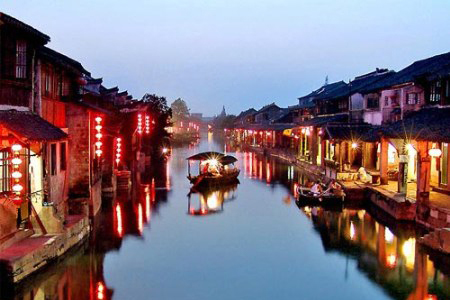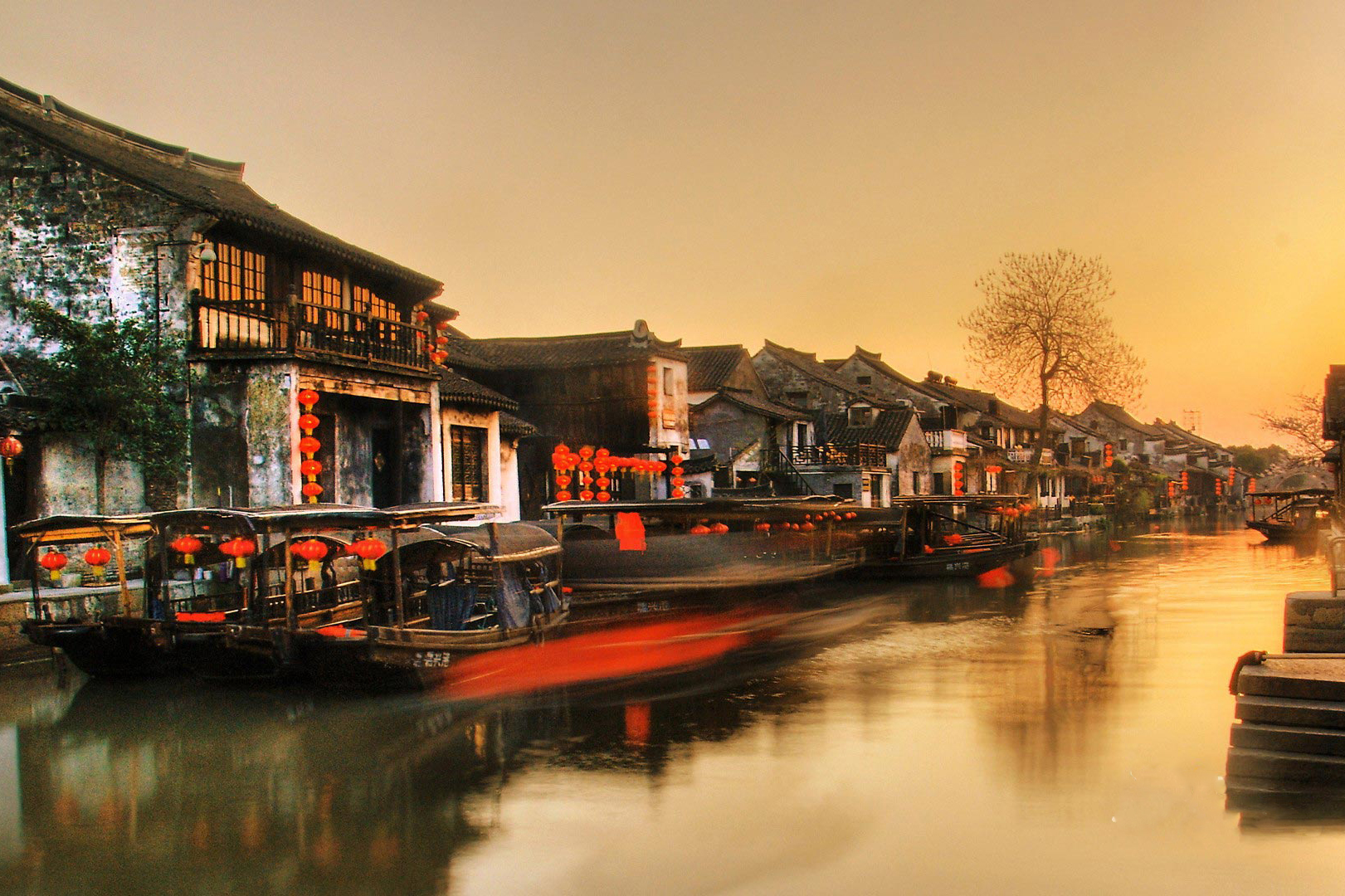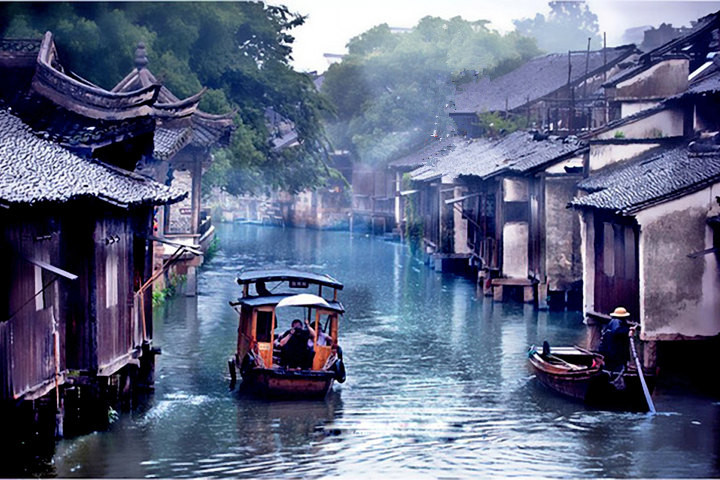Wuzhen




Intro
Wuzhen Water Town, lying in the northern part of Tongxiang City, Zhejiang Province, is a typical ancient town in southern China. It is about 50 miles (80 kilometers) from both Hangzhou and Suzhou, and 87 miles (140 kilometers) from Shanghai.
As one of the top six ancient towns in the southern region of the Yangtze River, Wuzhen boasts more than six thousand years of history and has always been a fertile land with abundant rice, fish and silk. It preserves the ancient appearance well and oozes charm of the water town itself. The small town, with houses made of black bricks and gray tiles contrasting sharply with the white walls, making it appear like a Chinese ink wash drawing. Stone bridges are seen here and there. Small boats with black awnings are floating on the murmuring rivers. Whether wandering along the riverside or strolling in the lanes paved with blue flagstones, you will be deeply impressed by the picturesque scenery and slow lifestyle.
A crisscrossing river divides the whole Wuzhen Water Town into four scenic sections, which are respectively called as Dongzha, Nanzha, Xizha, and Beizha by local people. Since Nanzha and Beizha are less developed, tourists often prefer to visit Dongzha and Xizha. Dongzha maintains the basic original layout while Xizha has been reconstructed to reproduce the ancient appearance of the water town. Compared with Dongzha, Xizha is more bustling with numerous shops.
History
In 314 BC, a small settlement was established along the banks of the Li River. During the Qin Dynasty's (221–207 BC) campaigns against the state of Nanyue, the first administration was set up in the area around Guilin. In 111 BC, during the reign of Emperor Wu of the Han Dynasty, Shi An County was established, which could be regarded as the beginning of the city. In AD 507, the town was renamed Guizhou. Guilin prospered in the Tang and Song dynasties but remained a county. The city was also a nexus between the central government and the southwest border, and it was where regular armies were placed to guard that border. Canals were built through the city so that food supplies could be directly transported from the food-productive Yangtze plain to the farthest southwestern point of the empire. In 1921, Guilin became one of the headquarters of the Northern Expeditionary Army led by Dr. Sun Yat-sen. In 1940, the city acquired its present name. In 1981, Guilin was listed by the State Council as one of the four cities (the other three being Beijing, Hangzhou and Suzhou) where the protection of historical and cultural heritage, as well as natural scenery, should be treated as a priority project.